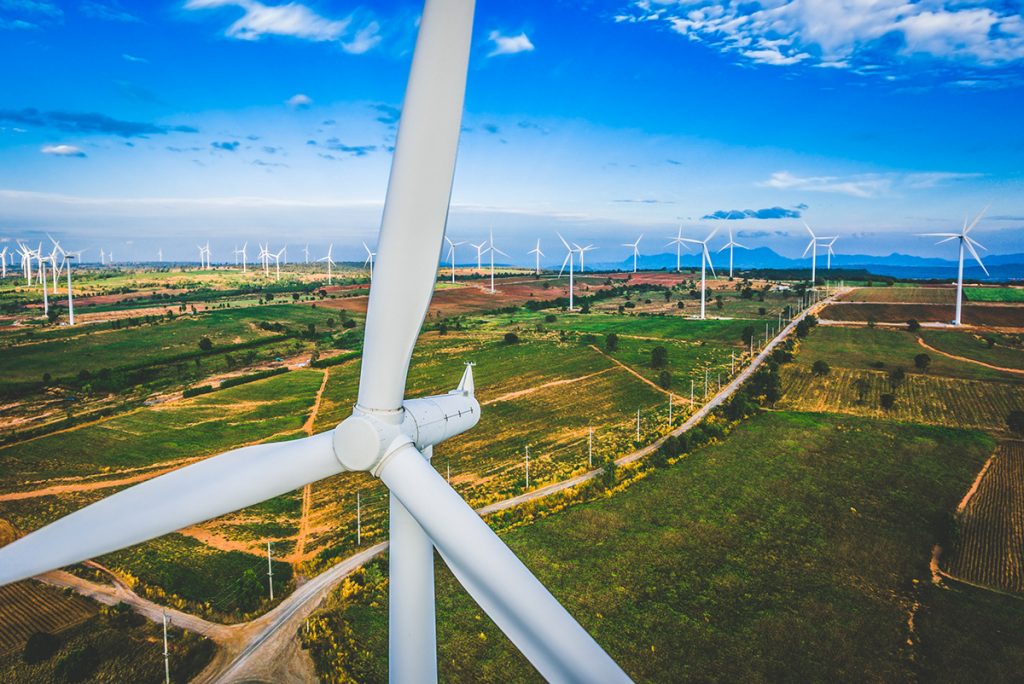
When Bob Dylan released his iconic song, “Blowin’ in the Wind,” in 1965, wind itself wasn’t recognized as a modern, renewable energy source. Back then, the three leading global energy sources were oil, coal and gas. In fact, wind didn’t emerge as a viable source of energy until the 1980s-1990s.
How far we’ve come! Now, an annual worldwide event exists to celebrate wind every June 15. Global Wind Day is a time to discover wind energy, its power and the possibilities it holds to reshape our energy systems, decarbonize our economies and boost jobs and economic growth.
Wind Energy Picks up Speed
Investors, lawmakers and regulators know that wind is one answer in transitioning to a greener, low-carbon energy future. In 2016, 47 percent of investments in global energy generation was made in wind.1 Here’s why.
 Global Wind Energy Council reported that wind farms are operating in more than 80 countries, generating energy from this renewable source. In the U.S., the wind industry grew 9 percent in 2017, adding 7,017 MW of new wind capacity. Furthermore, the American Wind Energy Association notes that U.S. wind power has tripled over the past decade and “today is the largest source of renewable generating capacity in the country.” The U.S. is second in the world (after China) in terms of both installed wind power capacity and wind energy generation, and wind provided 6.3 percent of America’s electricity in 2017.
Global Wind Energy Council reported that wind farms are operating in more than 80 countries, generating energy from this renewable source. In the U.S., the wind industry grew 9 percent in 2017, adding 7,017 MW of new wind capacity. Furthermore, the American Wind Energy Association notes that U.S. wind power has tripled over the past decade and “today is the largest source of renewable generating capacity in the country.” The U.S. is second in the world (after China) in terms of both installed wind power capacity and wind energy generation, and wind provided 6.3 percent of America’s electricity in 2017.
Energy Storage is Equally Essential
This is fostering enormous interest in energy storage solutions. According to Utility Dive magazine, “state lawmakers and regulators in 32 states considered 57 policy actions on deployment targets, studies and rebates for energy storage” in the first quarter of 2018. They noted this big change from just three years ago when utility executives and renewable energy skeptics believed that cost-competitive battery energy storage was unachievable.
Lead Batteries and Wind Energy
Lead batteries play an important role in making wind a sustainable option. Many wind facilities rely on lead batteries to regulate the variability of renewable electricity generation. Lead batteries dramatically improve power quality by storing excess energy when demand is low and releasing it when it is needed. And, compared to other battery technologies, lead batteries are a more affordable storage option in terms of upfront and overall lifetime cost. With an almost 100 percent recycling rate, lead batteries are the most recycled consumer product in the U.S.
The bottom line: energy storage makes renewables, like wind, work. But our electrical system is complex and has varied needs, which requires a mix of battery storage chemistries. Here are six factors to consider when evaluating battery chemistries:
1. Performance
2. Cost
3. Scalability
4. Sustainability
5. Safety
6. Reliability
We believe that when you compare lead batteries to other battery chemistries, you’ll discover that lead batteries are essential to the mix of energy storage technologies needed, especially for our planet’s briskly blowin’ wind.
Learn More
1. Hannah Ritchie and Max Roser (2018) – “Renewables”. Published online at OurWorldInData.org. Retrieved from: ‘https://ourworldindata.org/renewables‘


